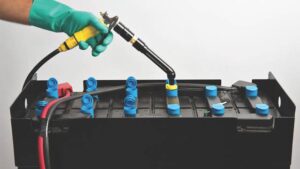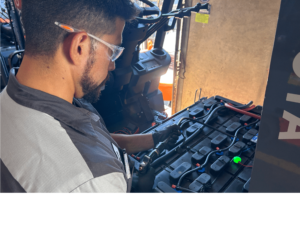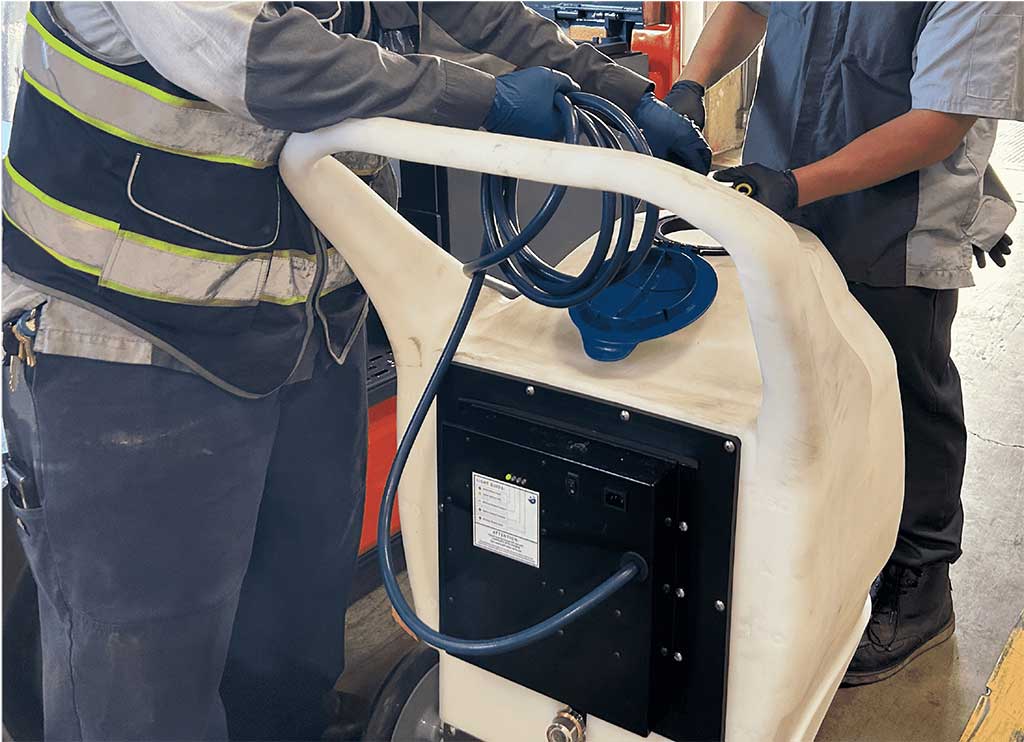As essential workhorses in warehouses, distribution centers, and industrial settings, electric forklifts rely on their batteries to power their operations efficiently and reliably. Proper maintenance is crucial to ensure peak performance and prolong the lifespan of these vital energy sources.
One critical aspect of forklift battery maintenance is watering. This blog post will delve into the significance of watering a forklift battery, exploring why it is necessary, and the steps to ensure optimal watering practices. By understanding the importance of watering and implementing the proper techniques, you can unlock the full potential of your forklift battery, boosting productivity while safeguarding your investment.
Why Watering a Forklift Battery is Necessary 
It’s essential to follow manufacturer guidelines and recommendations for watering frequency, water quality, and specific maintenance procedures to ensure the best performance and longevity of the forklift battery. Here are some of the reasons it is necessary to water a forklift battery.
- Compensate for Water Loss: During regular charging and discharging, a forklift battery can lose water due to evaporation and electrolysis. Watering the battery helps replenish the lost moisture and maintain proper electrolyte levels.
- Maintain Electrolyte Balance: The sulfuric acid electrolyte inside the battery needs to be diluted with water to maintain the correct concentration. Proper electrolyte balance is essential for the battery’s optimal performance and longevity.
- Prevent Drying Out: Insufficient water levels can lead to the drying out of the battery plates. Adequate watering ensures that the plates remain immersed in the electrolyte, promoting efficient chemical reactions and prolonging battery life.
- Control Temperature: Water acts as a coolant for the battery, regulating its temperature during operation. Sufficient water levels help dissipate heat and prevent excessive battery overheating, which can negatively impact performance and lead to premature failure.
- Maximize Battery Efficiency: Proper watering helps the battery operate at its peak efficiency. Maintaining the correct electrolyte levels promotes consistent voltage and capacity, resulting in optimal power output and longer runtimes for the forklift.
Eessential Tips for Watering a Forklift Battery 
Here are six tips for watering a battery:
- Before proceeding with watering, ensure that the battery has a full charge; if it doesn’t, refrain from watering at that time.
- Remove all vent caps from the battery and carefully inspect them to ensure they are free from defects or damage.
- Check the gravity readings from all cells. If possible, take note of the water levels or if any cell is too dry for gravity readings.
- Begin filling the battery with water, ensuring you reach the appropriate water levels for each cell.
- Once the watering is complete, securely replace all vent caps on the battery.
- Wipe off any water that may have dripped onto the battery, ensuring it is dry and clean.
Watering a forklift battery is a fundamental aspect of battery maintenance that directly impacts its performance, efficiency, and longevity. Regularly monitoring water levels, replenishing lost electrolytes, and following proper watering procedures can optimize your forklift battery’s power output, prevent premature deterioration, and extend lifespan.
Click here to read frequently asked questions about watering a forklift battery.
Do you need help with energy solutions or battery maintenance? TMHS recently partnered with Advanced Energy Solutions to give you access to the best energy experts in the industry. Contact AES to set up a free energy consultation today.

